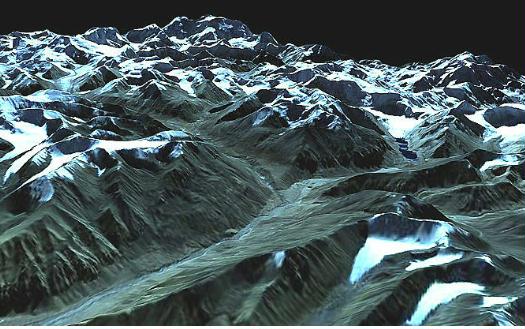
Preface. The Himalayan glaciers that supply water to a billion people are melting fast, already 30% has been lost since 1975.
Adding to the crisis are the 400 dams under construction or planned for Himalayan rivers in India, Pakistan, Nepal, and Bhutan to generate electricity and for water storage. The dams’ reservoirs and transmission lines will destroy biodiversity, thousands of houses, towns, villages, fields, 660 square miles of forests, and even parts of the highest highway of the world, the Karakoram highway. The dam projects are at risk of collapse from earthquakes in this seismically active region and of breach from flood bursts from glacial lakes upstream. Dams also threaten to intensify flooding downstream during intense downpours when reservoirs overflow (IR 2008, Amrith 2018).
Since the water flows to 16 nations, clearly these dams could cause turmoil and even war if river flows are cut off from downstream countries. Three of these nations, India, Pakistan, and China, have nuclear weapons.
It’s already happening. After a terrorist attack that killed 40 Indian police officers in Kashmir, India decided to retaliate by cutting off some river water that continues on to Pakistan, adding an extra source of conflict between two nuclear-armed neighbors. Pakistan is one of the most water-stressed countries in the world with seriously depleted underground aquifers and less storage behind their 2 largest dams due to silt (Johnson 2019).
But here’s some good news: Glaciers in the Himalayas have 37% more ice than thought. this is good news for the 250 million people living near the Himalayas (NS 2022).
But the glaciers of the Andean mountains have reached “peak water” much sooner than expected because glaciers are 27% thinner than previously estimated (NS 2022).
Related news:
June 15, 2020: A water crisis looms for 270 million people as South Asia’s glaciers shrink. National Geographic.
Nov 21, 2019. Maybe It Will Destroy Everything’: Pakistan’s Melting Glaciers Cause Alarm. NPR.org …pollution and global warming are causing the Ultar glacier to melt and form unstable lakes that could burst their icy banks at any moment. Already this summer, much of Harchi valley farms in Pakistan were destroyed in glacial floods. More than 3,000 glaciers have formed unstable lakes. At least 30 are at risk of bursting, which can trigger ice avalanches and flash floods that bring down water, debris and boulders.
Alice Friedemann www.energyskeptic.com Women in ecology author of 2021 Life After Fossil Fuels: A Reality Check on Alternative Energy best price here; 2015 When Trucks Stop Running: Energy and the Future of Transportation”, Barriers to Making Algal Biofuels, & “Crunch! Whole Grain Artisan Chips and Crackers”. Podcasts: Crazy Town, Collapse Chronicles, Derrick Jensen, Practical Prepping, KunstlerCast 253, KunstlerCast278, Peak Prosperity
***
Wu, K. 2019. Declassified spy images show Earth’s ‘Third Pole’ is melting fast. Accelerating ice melt in the Himalayas may imperil up to a billion people in South Asia who rely on glacier runoff for drinking water and more. PBS.org
According to a study published today in the journal Science Advances, rising temperatures in the Himalayas have melted nearly 30% of the region’s total ice mass since 1975.
These disappearing glaciers imperil the water supply of up to a billion people throughout Asia.
Once nicknamed Earth’s ‘Third Pole’ for its impressive cache of snow and ice, the Himalayas may now have a bleak future ahead. Four decades of satellite data, including recently declassified Cold War-era spy film, suggest these glaciers are currently receding twice as fast as they were at the end of the 20th century.
Several billion tons of ice are sloughing off the Himalayas each year without being replaced by snow. That spells serious trouble for the peoples of South Asia, who depend on seasonal Himalayan runoff for agriculture, hydropower, drinking water, and more. Melting glaciers could also prompt destructive floods and threaten local ecosystems, generating a ripple effect that may extend well beyond the boundaries of the mountain’s warming peaks.
The study’s sobering findings come as the result of a massive compilation of data across time and space. While previous studies have documented the trajectories of individual glaciers in the Himalayas, the new findings track 650 glaciers that span a staggering 1,250-mile-wide range across Nepal, Bhutan, India, and China. They also draw on some 40 years of satellite imagery, which the scientists stitched together to reconstruct a digital, three-dimensional portrait of the glacier’s changing surfaces—almost like an ultra-enhanced panorama.
When a team of climatologists analyzed the time series, they found a stark surge in glacier shrinkage. Between 1975 and 2000, an average of about 10 inches of ice were shed from the glaciers each year. Post-Y2K, however, the net loss doubled to around 20 inches per year—a finding in keeping with accelerated rates of warming around the globe.
While previous studies have had difficulty disentangling the relative contributions of rising temperatures, ice-melting pollutants, and reduced rainfall to the boost in glacier melt, the latter two simply aren’t enough to explain the alarming drop in ice mass in recent years.
References
Amrith SS (2018) The race to dam the Himalayas. Hundreds of big projects are planned for the rivers that plunge from the roof of the world. New York Times.
IR (2008) Mountains of concrete: Dam building in the Himalayas. International Rivers.
Johnson K (2019) Are India and Pakistan on the verge of a water war? Foreign Policy.
NS (2022) Andes ‘peak water’ looms. New Scientist.
